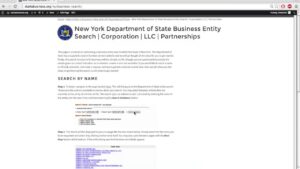Submit sitemap to Google Search Console Searchatlas is an essential step for ensuring that your website is indexed efficiently. By using the Searchatlas platform, you can streamline this process and improve your site’s visibility in search engine results. This submission allows Google to better understand your site’s structure, helping it to crawl and index your pages more effectively.
To submit your sitemap, you’ll first need to generate a valid sitemap file that adheres to XML standards. Once your sitemap is ready, you can navigate to the Google Search Console and enter the URL of your sitemap under the “Sitemaps” section. Following these steps will ensure that you successfully Submit Sitemap to Google Search Console Searchatlas, enhancing your site’s chances of ranking higher in search results.
How To Submit Sitemap To Google Search Console Searchatlas?
To effectively Submit Sitemap to Google Search Console Searchatlas, you first need to create a sitemap file that lists all the important pages of your website. This file should be in XML format, which is the standard format recognized by search engines. Various online tools and website platforms can help you generate this file if you don’t have one ready.
Once your sitemap is prepared, go to Google Search Console and log in to your account. In the dashboard, find the “Sitemaps” section and enter the URL of your sitemap in the provided field. After submitting, you can monitor the status to ensure Google successfully processes it, which will enhance your site’s visibility and indexing efficiency.
What Are The Benefits Of Submit Sitemap to Google Search Console Searchatlas?
Improved Indexing
Submitting a sitemap helps search engines discover and index your website’s pages more efficiently, ensuring that all important content is crawled.
Faster Page Discovery
Sitemaps allow Google to find new or updated pages quickly, reducing the time it takes for your content to appear in search results.
Enhanced Visibility
By providing a sitemap, you can increase the visibility of your website, making it easier for search engines to understand its structure and prioritize important pages.
Error Detection
Google Search Console alerts you to errors in your sitemap, such as broken links or unreachable pages, allowing you to fix issues that could hinder indexing.
Insights into Crawling Issues
The console provides detailed reports on how Google crawls your site, helping you identify and resolve any crawling issues that may arise.
Prioritization of Content
Sitemaps allow you to indicate which pages are more important and how frequently they are updated, guiding search engines on how to prioritize crawling.
Control Over Indexing
You can prevent specific pages from being indexed by excluding them from your sitemap, offering better control over what content appears in search results.
Mobile Optimization Insights
Google provides feedback on mobile usability issues through the console, which can be linked to how well your sitemap helps search engines understand your mobile content.
Structured Data Benefits
When your sitemap includes structured data, it can enhance your search listings with rich snippets, potentially increasing click-through rates.
Support for Multiple Sitemaps
If your website is large, you can submit multiple sitemaps, allowing you to organize and manage your content effectively without overwhelming a single sitemap.
Facilitates Video and Image Indexing
You can include sitemaps for images and videos, helping search engines discover and index rich media content, which can lead to more diverse search results.
Historical Data Access
Google Search Console retains historical data about your sitemap submissions, allowing you to analyze changes in indexing and traffic over time.
Enhanced User Experience
By ensuring all your important pages are indexed, you improve user experience as visitors are more likely to find relevant content in search results.
SEO Strategy Insights
Submitting your sitemap can provide insights into how well your SEO strategies are working by showing which pages are being indexed and how often.
Competitor Analysis
Monitoring how your sitemap performs in Google Search Console can help you gauge your site’s performance compared to competitors, informing your SEO tactics.
Can I Use Searchatlas For Sitemap Submission To Google?
Yes, you can use Submit Sitemap to Google Search Console Searchatlas. This platform provides a user-friendly interface that allows website owners to generate and manage sitemaps easily. By utilizing Searchatlas, you can ensure that your sitemap is formatted correctly and ready for submission to the Google Search Console, improving your site’s visibility in search results.
Submit Sitemap to Google Search Console Searchatlas offers several advantages, including automated updates whenever you make changes to your website. This feature helps maintain the accuracy of the sitemap, ensuring that search engines are informed about your latest content. Additionally, Searchatlas often provides analytics and insights related to your sitemap submission, allowing you to track the performance and indexing status of your web pages effectively.
What Format Should My Sitemap Be When Submitting To Google Search Console Searchatlas?
When Submit Sitemap to Google Search Console Searchatlas through Searchatlas, it’s essential to ensure that your sitemap is in the correct format for optimal indexing and visibility. Here are the acceptable formats for sitemaps:
- XML Format: This is the most commonly used format for sitemaps. An XML sitemap provides a structured way for search engines to understand the organization of your website’s content. It should follow the sitemap protocol outlined by Google, including tags for the location, last modified date, change frequency, and priority of each page.
- HTML Format: While not as common for sitemap submission, an HTML sitemap can be useful for users and search engines to navigate through your website. However, Google primarily prefers XML sitemaps for indexing purposes.
- Text Format: A plain text file containing a list of URLs is another format that can be used for sitemaps. Each URL should be on a separate line, and this format is simpler but less informative compared to XML.
- RSS or Atom Feeds: If your website regularly updates content (like blogs), you can submit RSS or Atom feeds as sitemaps. These formats are particularly useful for informing Google about new content updates.
- Compressed Sitemaps: If your sitemap file is too large, you can compress it using gzip. Google Search Console accepts compressed XML sitemaps, making it easier to manage large sites.
When creating your sitemap with Searchatlas, ensure that it adheres to the standards of the sitemap protocol and that it includes all important URLs you want indexed. Once your sitemap is ready, you can submit it directly through the Google Search Console interface to facilitate better indexing by Google.
How Often Should I Update My Sitemap For Google Search Console Searchatlas?
Regularly updating your sitemap is essential for maintaining optimal visibility in search engine results. Ideally, you should update your sitemap whenever you make significant changes to your website, such as adding new pages, removing outdated content, or altering the structure of existing pages. This practice ensures that search engines are informed about the most current content on your site, allowing them to crawl and index it effectively.
It’s also wise to review and refresh your sitemap periodically. Many website owners opt to update their sitemap monthly or quarterly, even if there haven’t been significant changes, to ensure that all relevant pages are included. By keeping your sitemap current, you enhance the chances of improved rankings and better user experience, as search engines will have the latest information about your site’s structure and content.
What Common Errors Occur When Submitting Sitemap To Google Search Console Searchatlas?
When submitting a sitemap to Google Search Console, several common errors can hinder the process and affect your site’s indexing. One prevalent issue is formatting errors, such as incorrect XML syntax or invalid characters in the sitemap file. These errors prevent Google from reading the sitemap correctly, leading to submission failures.
Another frequent error is including URLs that return 404 errors or are blocked by robots.txt files. If your sitemap contains links to pages that no longer exist or are disallowed for crawling, it can negatively impact your site’s visibility in search results. Additionally, not adhering to Google’s guidelines, such as exceeding the maximum number of URLs per sitemap or not including a valid sitemap index file, can also lead to errors during the submission process. Ensuring your sitemap is well-structured and complies with Google’s requirements can help avoid these common pitfalls.
Submit Sitemap to Google Search Console Searchatlas is essential for ensuring that your website is accurately indexed and visible in search results. By being aware of common errors and adhering to best practices, you can improve the chances of a successful submission. Ultimately, a properly structured sitemap not only aids in search engine optimization but also enhances the user experience by ensuring that all your important content is discoverable.
For more updates visit our website.












